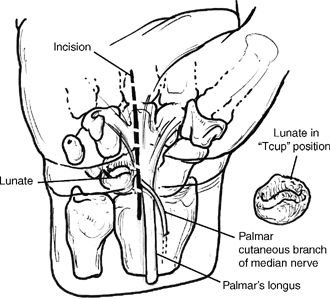40 Open Reduction and Internal Fixation Lunate Dislocation via Combined Dorsal—Palmar Approach
Indications
Technique

Stay updated, free articles. Join our Telegram channel

Full access? Get Clinical Tree








